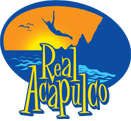Government Said to Inflate Tourism Data
(Acapulco, AN 22 March) The official hotel occupancy reports, announced on Monday of each week, have long been viewed with suspicion by the private sector. Yesterday the State Department of Tourism reported a state-wide average number that was higher than any of the figures reported for the three main tourist areas, Acapulco, Taxco and Zihuatanejo-Ixtapa. According to the website Acanews, the number released on the website of the State of Guerrero is 3.7% higher than the average the same web page reports for the three subareas. The reported occupancy was 86.2% overall, when the arithmetic average of the three areas was 82.5%. Surely a weighted average would be more informative, but the underlying capacity information is not made public.
The same issue arose with the report on Acapulco’s hotel occupancy. The number reported on the state’s website is 85%, while the figures reported for the three regions were 89.5% for Diamante, 86.7% for the Golden Zone and 62.3% for Acapulco Nautica. The arithmetic average for the three zones is 79%, not 85%. The capacity in each of the three zones differs greatly, so if anything, the average would be weighted more towards lower-occupancy, higher-capacity hotels in the traditional zone.
The reported average for Acapulco in 2010 was 72.8% for the same holiday weekend, and it is not very likely that in this year, the occupancy figure would be higher. In the five days prior to this year’s long weekend, organized crime registered 50 homicides in the peripheral communities of Acapulco, a fact that the private sector feels discouraged tourism. Government officials, by contrast, have uniformly tried to minimize the effect on tourists of “the security issue” – the term they prefer over “fear of violence.” Evidently the plan is to “Speak Well of Aca,” to echo the words of the private sector’s image-making initiative, even if you have to stretch the truth.
The hotel association has long complained that the announced occupancy rates are misleading, even if the arithmetic were correct. A substantial part of Acapulco’s lodging is, in their words, “pirate.” People with empty rooms and apartments take in visitors without any of the formalities of a hotel. They pay no taxes and contribute nothing to the sector’s promotional efforts. In short, they are “free-riders.” This also includes the many thousands of condos and timeshares. In Acapulco Diamante there are more of these rooms than hotel accommodations, and their owners easily sell upscale lodging in competition with the resorts. If only the lodging and tax laws were enforced, the hoteliers argue, occupancy rates would be significantly higher.
Occupancy rates present other confounding problems: First, “occupancy” does not necessarily mean that any rental of a room for money has taken place. Many rooms go at little or no cost to promoters, tour organizers, and other “complimentary” guests. Additionally, competition for group sales has pushed average prices for blocks of rooms to a bare minimum level. Finally, the “capacity” figure itself is suspect. Many hotels decide for themselves how many rooms, beds or “pillows” they have available, so that the total figure is surely a blend of many different criteria and opinions. For that reason the professionals in the sector say that the “official” numbers are practically useless, and that a more accurate picture comes from privately sharing information about specific properties.

